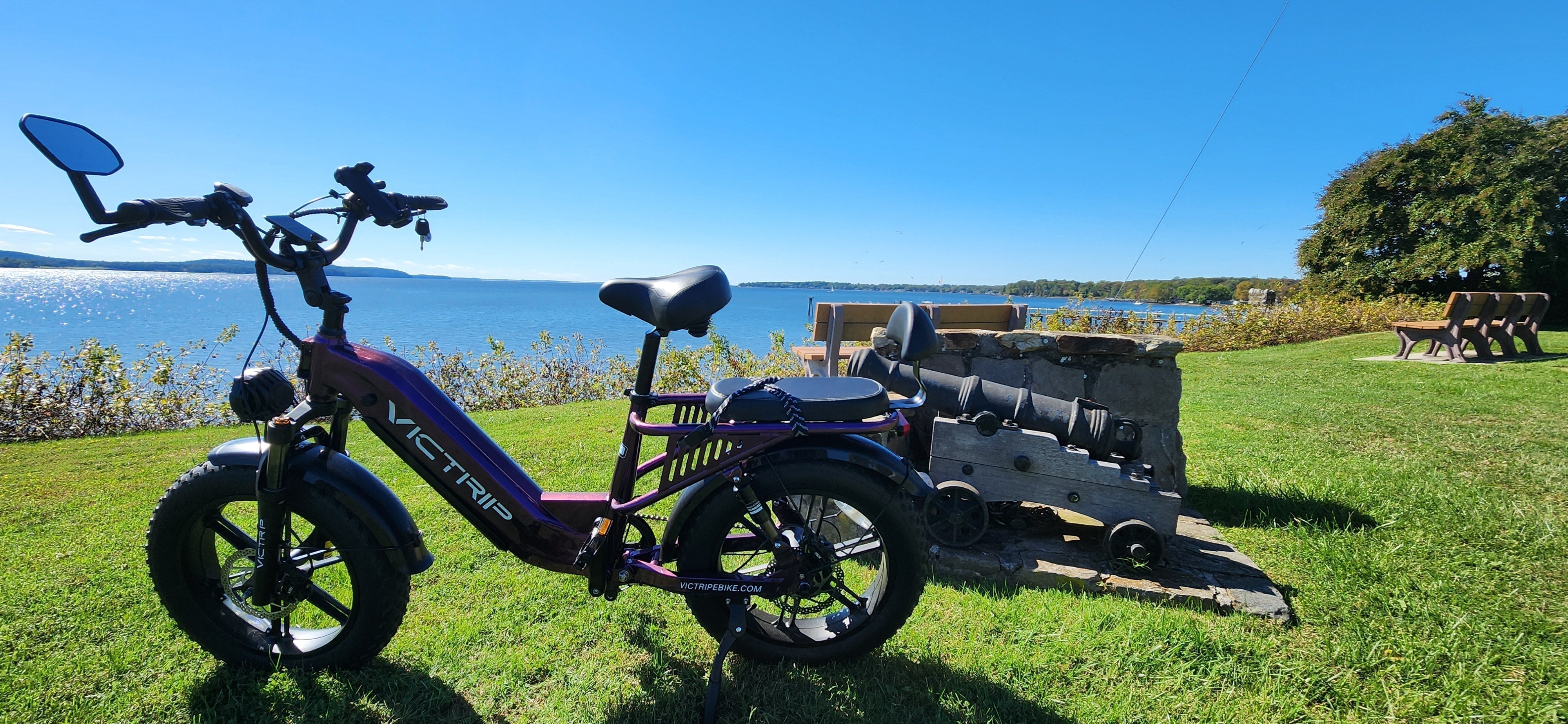
Choosing the right mobility option is essential as seniors aim to stay active, independent, and safe. In the article, we’ll address whether a bike or an e-trike is the better fit for senior riders, focusing on comfort, stability, safety, and long-term usability. As older adults continue embracing outdoor recreation and electric mobility, understanding the differences between traditional bicycles and electric tricycles becomes more important than ever.
Below, we dive deep into every aspect—safety, mobility, comfort, ease of use, and maintenance—to help senior riders make an informed decision. Let’s break it all down in a way that’s friendly, accurate, and easy to follow.
Understanding the Needs of Senior Riders
Staying active is important for seniors, but it’s equally important that mobility devices align with their physical needs. As we age, there are natural changes in balance, joint flexibility, vision, and endurance. This doesn’t mean older adults need to stop cycling—far from it. They just need to pick the right equipment that supports their lifestyle and health requirements.
Cycling remains one of the best low-impact activities for seniors. It strengthens joints, improves circulation, and boosts mental well-being. But the type of ride makes a big difference.
Common Mobility Challenges
Many senior riders experience:
-
Reduced balance control
-
Decreased muscle mass
-
Slower reaction time
-
Joint stiffness, especially in the knees and hips
-
Fear of falling
-
Heightened sensitivity to road vibrations
These challenges don’t stop seniors from enjoying outdoor activities, but they do influence what kind of ride is safer and more comfortable.
Safety Priorities for Older Adults
Safety is often the deciding factor in the bike vs e-trike debate. Seniors need:
-
Stable riding platforms
-
Easy mounting and dismounting
-
Safe braking systems
-
Higher visibility on the road
-
Controlled effort—without overexerting
E-trikes especially shine in these areas, offering three-wheel support, pedal assist, and upright seating that reduces strain. But traditional bikes still appeal to active seniors who want a classic riding experience.
What Makes Traditional Bikes Appealing?
Traditional two-wheel bikes continue to be popular among seniors who are physically active, confident in their balance, and enjoy a simpler, lighter machine.
Health and Fitness Benefits
Cycling boosts:
-
Cardiovascular health
-
Leg strength
-
Joint mobility
-
Coordination
Since bikes rely solely on human power, they provide an excellent workout, helping riders stay fit without hitting the gym.
Cost Advantages
Traditional bikes are usually:
-
More affordable
-
Easier to store
-
Cheaper to maintain
A good-quality bike can cost a fraction of an e-trike, making it appealing to budget-conscious seniors.
Maneuverability and Riding Experience
For seniors who still love the thrill of cycling, a bike offers:
-
Faster turns
-
Lightweight handling
-
Easy transport on racks
-
More natural pedaling dynamics
Some seniors simply prefer the feeling of a two-wheel ride—it’s familiar, simple, and enjoyable.
Limitations of Traditional Bikes for Seniors
As beneficial as bikes are, they also come with limitations for older adults.
Balance and Stability Concerns
Many seniors struggle with balance due to:
-
Age-related vestibular decline
-
Decreased reaction time
-
Weaker core muscles
This can make two-wheel bikes intimidating. A single wobble can cause falls that lead to wrist, hip, or shoulder injuries.
Risk of Fatigue or Overexertion
Long rides can strain seniors, especially when facing:
-
Hills
-
Wind resistance
-
Long distances
-
Heavy gear
Without electric assistance, seniors may tire quickly, making rides less enjoyable and sometimes unsafe.
Why E-Trikes Are Growing in Popularity
E-trikes are quickly becoming a top choice for seniors who want a safe, stable, and comfortable riding experience.
Enhanced Stability from Three-Wheel Design
Three wheels eliminate the need to balance, which is a massive relief for older adults. Riders can:
-
Stop without putting their feet down
-
Ride at low speeds without wobbling
-
Mount and dismount with ease
The stable base dramatically reduces fall risk.

Electric Assist for Reduced Strain
Pedal assist helps seniors:
-
Climb hills effortlessly
-
Ride longer distances
-
Avoid joint strain
-
Control their pace without overworking
This is especially beneficial for seniors with arthritis, knee pain, or limited stamina.
Comfort Features Tailored for Seniors
E-trikes often include:
-
Wide cushioned seats
-
Backrests
-
Upright handlebars
-
Storage baskets
-
Step-through frames
All these features create a supportive and enjoyable riding experience.

A Senior-Friendly Example: Victrip T1 Foldable Electric Tricycle
A standout model that demonstrates why e-trikes are becoming so popular is the VICTRIP T1 Foldable Electric Tricycle.
The Victrip T1 includes several senior-focused features:
-
48V 20Ah LG battery + 1000W peak motor for powerful, effortless riding
-
Up to 80 miles of range, ideal for long leisure rides
-
Ultra-stable three-wheel configuration with hydraulic disc brakes
-
Low step-through frame for easy mounting and dismounting
-
Folds in about 10 seconds for simple storage or transport
-
Up to 450 lbs payload capacity, perfect for carrying groceries, pets, or gear
The T1’s blend of stability, comfort, and folding convenience shows exactly why more seniors are choosing e-trikes over traditional bikes—it offers the freedom to ride confidently while minimizing physical strain and safety risks.
TOP PICK

VICTRIP® T1 Foldable Electric Tricycle
$1,299.00
Comparing Bikes vs E-Trikes for Senior Riders
| Feature | Traditional Bikes | E-Trikes |
|---|---|---|
| Stability | Low | Very High |
| Effort Required | High | Low–Moderate |
| Comfort | Moderate | High |
| Safety | Depends on balance | Excellent |
| Cost | Low | Higher |
| Storage | Easy | Requires more space |
Safety Comparison
E-trikes are clear winners when it comes to stability and low fall risk.
Comfort and Ergonomics
E-trikes offer back support, wider seats, and a more relaxed riding posture.
Cost and Maintenance
Bikes are cheaper up front, but e-trikes provide long-term value through safety and accessibility.
Choosing the Best Option: Key Questions for Seniors
Health Factors to Consider
-
Is balance an issue?
-
Are joint problems present?
-
How’s cardiovascular health?
Lifestyle and Intended Use
-
Daily commuting?
-
Leisure rides?
-
Exercise motivation?
Budget and Long-Term Value
-
Will a safer option save medical costs?
-
Is comfort worth the investment?
Conclusion
Choosing between a bike and an e-trike depends on the senior rider’s health, lifestyle, and comfort preferences. Traditional bikes are great for active, confident riders, while e-trikes provide unmatched stability, safety, and ease of use. For most seniors, the e-trike is the better long-term option due to its comfort, accessibility, and reduced risk of injury.
For more in-depth mobility resources, visit reputable organizations like AARP (https://www.aarp.org).
FAQs
Are e-trikes safe for seniors with balance issues?
Yes. E-trikes are specifically designed for riders who want maximum stability without worrying about falls.
Do e-trikes require a lot of strength to ride?
Not at all. The electric motor provides pedal assist, making riding easy even on hills.
Can seniors ride e-trikes on bike paths?
Yes, most e-trikes are allowed on shared paths, but local regulations vary.
Which option is better for seniors with arthritis?
E-trikes provide reduced joint strain and upright comfort, making them the better choice.
Are traditional bikes still good for active seniors?
Absolutely—if balance and stamina are not concerns, bikes offer great exercise and affordability.




Share:
Christmas or Birthday? Give the Gift of Electric Fun
Top Reasons Cyclists Prefer Torque Sensor Ebike